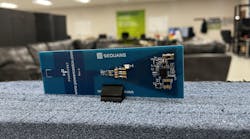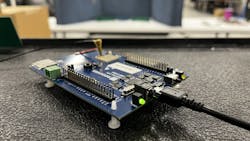“Power as a Service” Now a Possibility with Cellular-Based Remote RF Charging Platform
The Overview
Powercast has created a cellular-based RF power-over-distance wireless-charging platform, built around Sequans’ Monarch cellular IoT connectivity technology. The introduction of cellular technology into the over-the-air RF wireless-charging picture creates opportunities for more manufacturers to develop environmentally friendly smart-home IoT ecosystems that eliminate disposable batteries.
Who Needs It & Why?
Operating in the lower 600- to 900-MHz frequency bands licensed by mobile carriers, the Powercast cellular-based RF wireless charging platform offers the following benefits:
- Because cellular bands are licensed, or private, they have more flexibility on how much power they can transmit, on antenna gain, and on bandwidth, which enables end devices to charge faster and at greater distances when compared to unlicensed, or public, bands.
- As cellular service moves increasingly to higher frequencies like 5G to increase data throughput, carriers can monetize their underused low-frequency bands and offer “power as a service.”
- Ability to simultaneously charge many consumer devices at-a-distance, such as IoT sensors for smart-home security and automation, TV remotes, keyboards, earbuds, headphones, smart watches, fitness bands, and hearing aids.
Using licensed cellular frequencies to increase device charging power will allow manufacturers to create green, sustainable IoT devices that can charge more quickly and at longer distances from a cellular RF transmitter, it’s claimed.
Under the Hood
In demos at this week’s Mobile World Congress in Barcelona, a Sequans Monarch 2 cellular modem teams with Powercast’s 700-MHz antenna to transmit a 700-MHz RF cellular signal to Powercast’s PCC110 receiver and RF-to-dc converter chip.That then powers a battery-free sensor beacon to transmit temperature and humidity data to a gateway or phone.


